Bhopal gets a bum rap. Tell anyone in Delhi or Mumbai that you are travelling in search of good North Indian food and they will assume you are going to Lucknow. (Unless they are Punjabis, in which case they will assume you are going to Amritsar to eat kulchas.)
Say that no, you are giving UP a miss and going to Madhya Pradesh instead, and they will look at you curiously and say something like “Wow! I hear the street food in Indore is amazing”.
Say no, it is not Indore but Bhopal you are going to, and they will first look baffled. And then they will change the subject.
I am always surprised by how much people in other cities either underestimate – or even diss – Bhopal. Not only is it the prettiest state capital in North India with its lakes and gardens, it is also one of India’s great food cities. And yet, nobody ever talks about it.
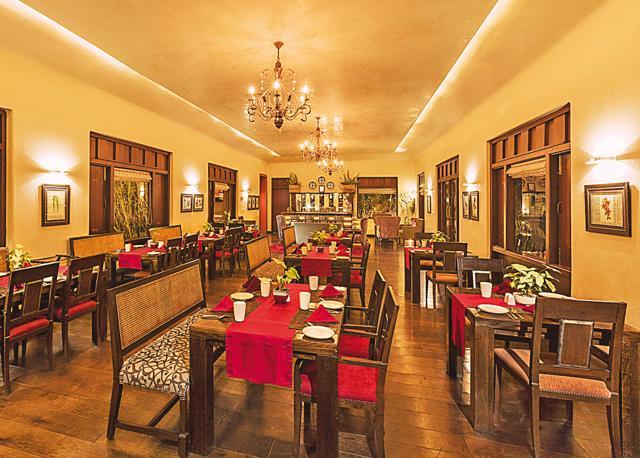
I stayed this time at the Jehan Numa Retreat, a small resort-type hotel, not too far from the centre of town, run by the Jehan Group of Hotels, Bhopal’s oldest and most famous hoteliers. Checking in late at night (nearly 11pm), I ordered a room service biryani and was surprised by a) the quality of the service (fast, efficient, polite: you won’t get this in Lucknow or Patna) and b) by how good and flavourful the biryani was.
I knew that Bhopal had a street food tradition that rivaled Indore’s, but I also knew that much to Bhopal’s chagrin, Indore had become the boom town in the region over the last couple of decades. As prosperity had spread across Indore, the local merchant class (all largely vegetarian) had patronised the street food vendors (many of whom now had full-fledged stalls and restaurants) to the extent that Indore boasted of being the street food capital of India.
Bhopal has not seen the same boost in prosperity nor is it dominated by a vegetarian merchant class. But the street food is amazing and locals will argue that it beats Indore’s.
I spent much of my time in Bhopal on the streets and the tastes have lingered in my memory. There was the spicy Sehore kachori, which Indore and Bhopal fight over (Sehore is near Bhopal). It is eaten with a spicier chutney and though its teekhaness is a source of great chauvinistic pride in Indore, I loved the Bhopal version.
There was Bhopal’s take on the poha. I enjoyed the thrill of eating it on the road with a freshly-made hot jalebi. You took one spoonful of poha. Then you took a bite of the jalebi and went into a state of bliss as your brain tried to process the two contrasting flavours.

Bhopal has samosas too. The dahi samosa is famous and they turn it into a chaat dish with chutney, sev and dahi scattered over a broken samosa. My favourite though was another local speciality, the raw banana samosa, which was so masaledar and tangy that you never imagined that any bananas were involved in its making. All of which begged the question: Why would you need to put raw banana into a samosa when you could just use aloo?
I knew the answer almost as soon as the question left my mouth. A significant proportion of Bhopal’s merchant class are Jains and strict Jains will not eat tubers that grow beneath the earth. So potatoes are a no-no. And bananas are drafted to do the job instead.
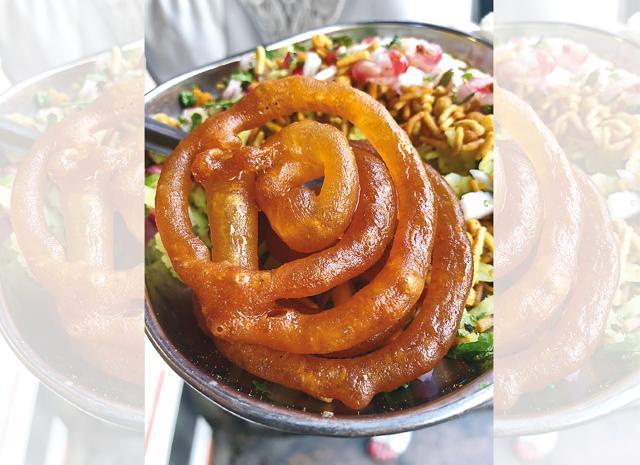
There were other delights. At the evocatively named Sonu Monu Ke Namkeen, where I had the banana samosa, they also made what you and I would call a gulab jamun but which they called Mawa Bati. “It is pure,” they said. “Not one spoon of maida.” And yes, it was light (well, as light as a gulab jamun type sweet can be) and tasty.
The street food tradition is just one part of the Bhopal food scene.
Like Lucknow, which has India’s best chaat but also boasts of a great Avadhi tradition, Bhopal has a nawabi tradition that dates back several centuries. It is a tradition that deserves to be better known.
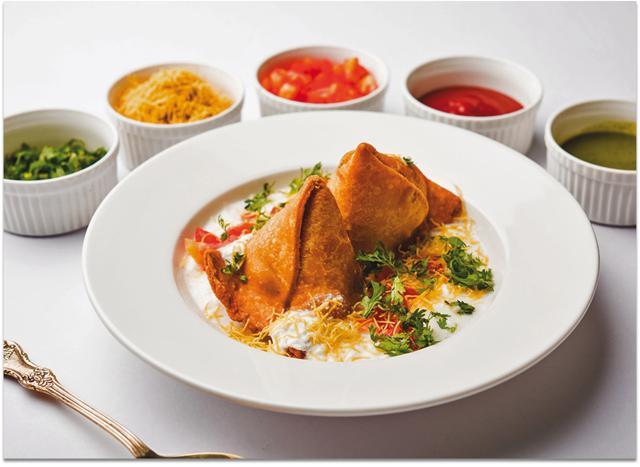
It is quite different from Lucknowi food. First of all, there is the coriander. Those of us who have grown up in Western India love the flavour of kothmir (we don’t call it dhania), but we don’t expect North Indians to love the leaves as much as we do. In Bhopal, however, kothmir is pretty much the defining feature of the cuisine. Almost as important is the reliance on fried onions. They are scattered liberally over many dishes as a garnish and brown (fried) onion is used in many gravies.
Then, there is the question of sophistication. Bhopali cuisine is not as refined as Lucknowi food. There is no endless straining and sieving. No aromatics are used to perfume the dishes. In Lucknow, they say that a fine keema is the perfect medium for conveying the complex masala mixes of the great Avadhi chefs. In Bhopal, they really don’t have any fine keema. And there is less poncing around with secret masala combinations.
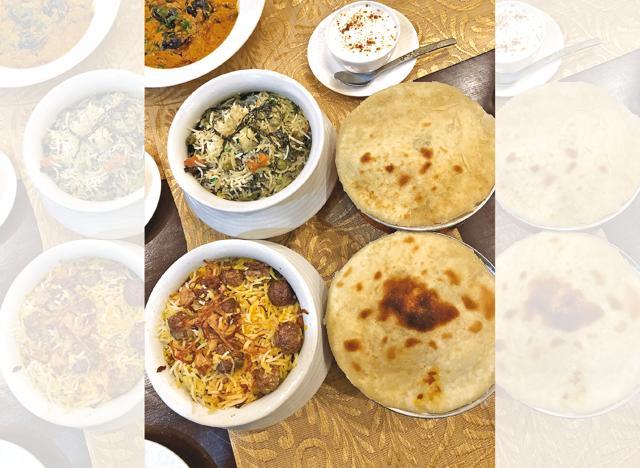
Most of the keema I had was roughly chopped by hand and bore no resemblance to the fine keema of Lucknow. The kebabs were more rustic and less dependant on the spices. They were leaner too. Though it is hard to generalise, I found that overall there was less emphasis on animal fat than in Lucknow. There was less fat added to kebab mixtures and the gravies were not as dependent on fattiness and dairy products.
I don’t want to generalise because the food was so different nearly everywhere I went. And nearly everybody I spoke to had varying views on what Bhopali food really was like. Some people pointed to the use of several (largely non-teekha) chillies, a tendency that is absent in Lucknow. Others said that the food was hotter. This was contradicted by locals who said that Bhopalis didn’t like too much spice. The contradictions piled up!
Two dishes seemed to me to sum up the diversity of views. At some places, what was described as a local biryani was spicier and wetter. At others it was more like a pulao. Some people told me that Bhopal liked tangy food. Others said that the point of a Bhopal biryani was not the tang but the way in which the rice absorbed the stock to create a gentler, smoother taste.
By the end of my trip, I was so confused that I decided that I really had no clue who was right. The other dish that added to my confusion was the Rezala, in many ways, the signature dish of Bhopali cuisine.
I had four different Rezalas in Bhopal. All four were significantly different. If you know the Bengali (and Bangladeshi) way of making a Rezala then you will expect a rich, beige (or light brown) kind of gravy. Not so in Bhopal where a Rezala is really all about the fresh coriander.
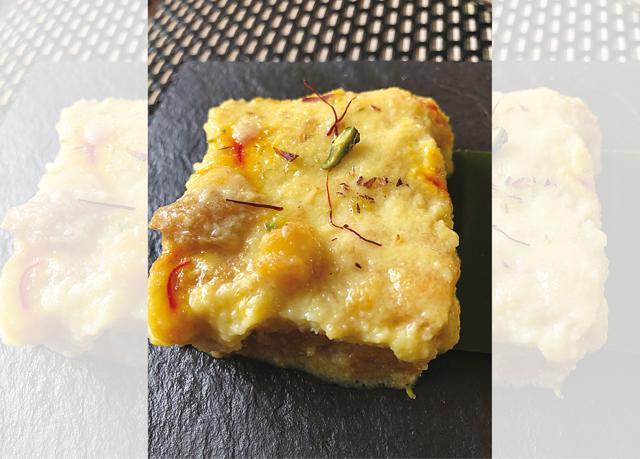
I was told that the coriander made the gravy green. Yet, the first Rezala I had, though very tasty, had a brown gravy. No adequate explanation was offered for this. The second Rezala had a watery gravy which even I, who was just discovering Bhopali food, knew was wrong. The third should have been the definitive version because I had it at the Jehan Numa Palace, which is universally respected in Bhopal for recreating the dishes of the Nawabi era because of the gourmet tastes of its owners. Their Rezala was green and had a tasty gravy.
The following day, however, when I had lunch at my hotel (run by the same group), the Rezala was a semi-dry dish. How could the same chain serve the same dish in two different styles?
I guess in Bhopal, it sometimes comes down to the hand of the chef. The Shahi Tukra at the Jehan Numa Palace was delicious. But the same dessert was even better at the Retreat. The difference may have been that the Retreat chef flashed it under a salamander before serving. (I don’t think they did that at the Palace.)
Some people find these variations annoying. I find them fascinating. A great local Indian cuisine is not like old style French food with its standardised recipes. It depends on the chef, on his andaaz and his take on each dish.
I’ll go back to Bhopal, of course. I’ll try more Rezalas and more innovative samosas. It is the one city after Lucknow where both street food and nawabi cuisine are outstanding.
Now if only the Bhopalis would do a better job of selling their cuisine to the rest of India!
From HT Brunch, August 4, 2019



